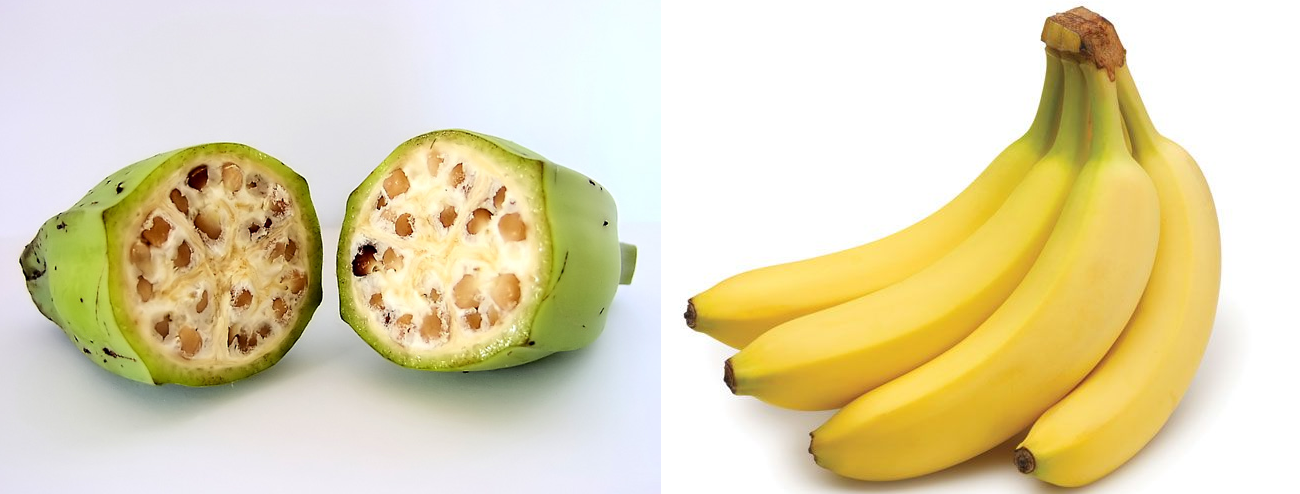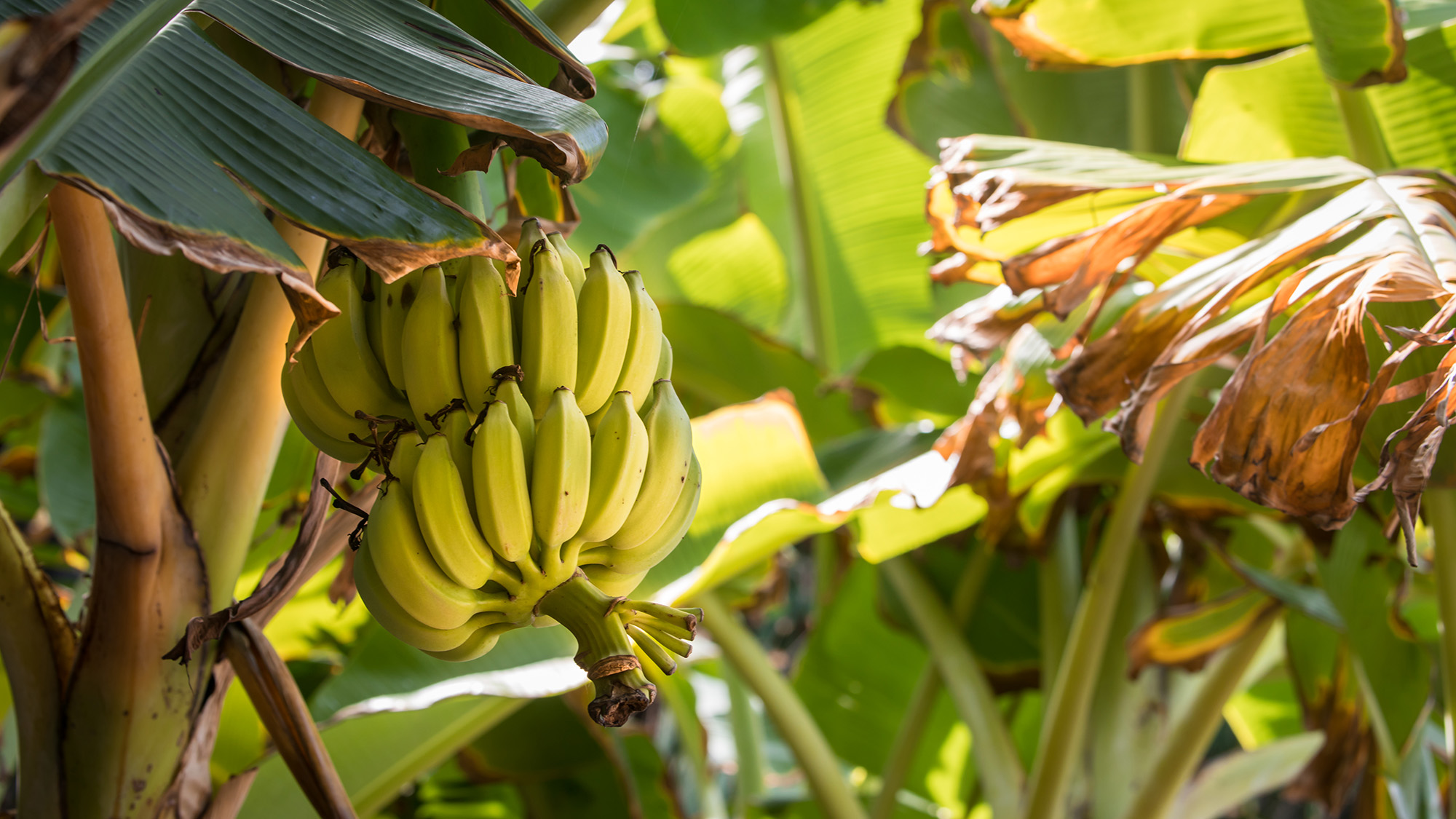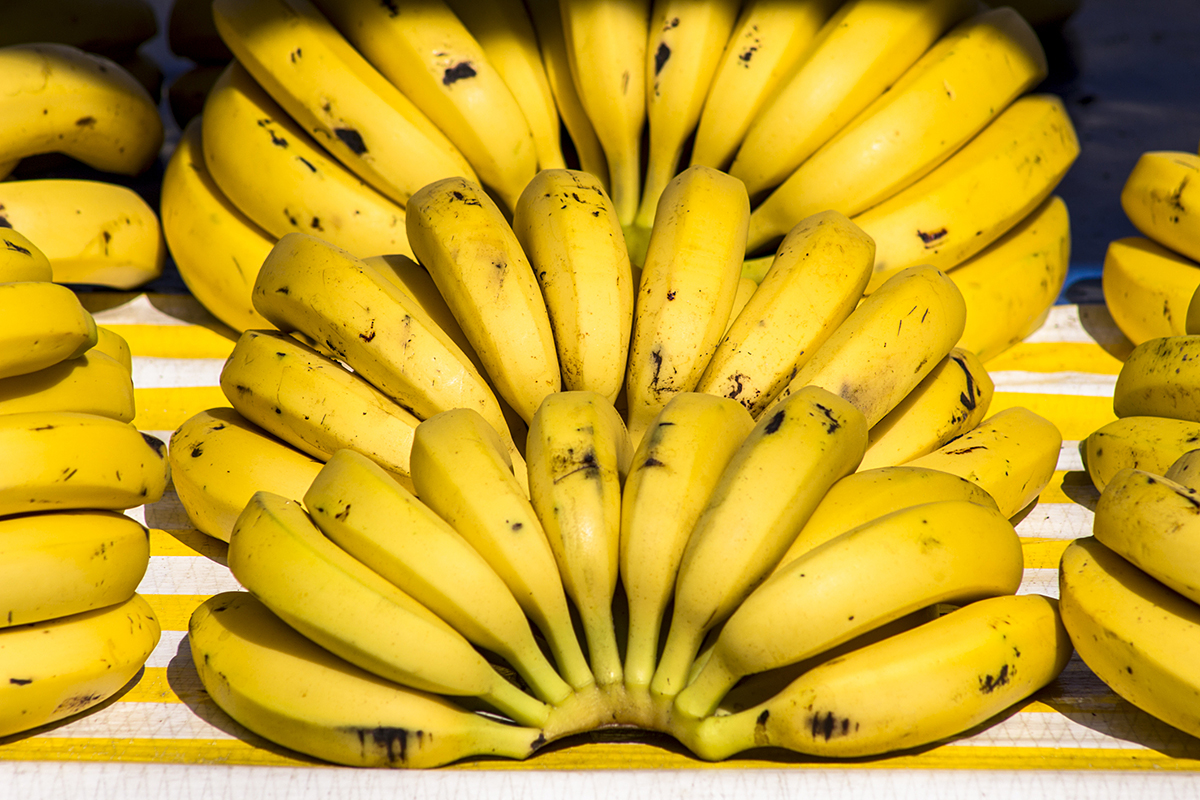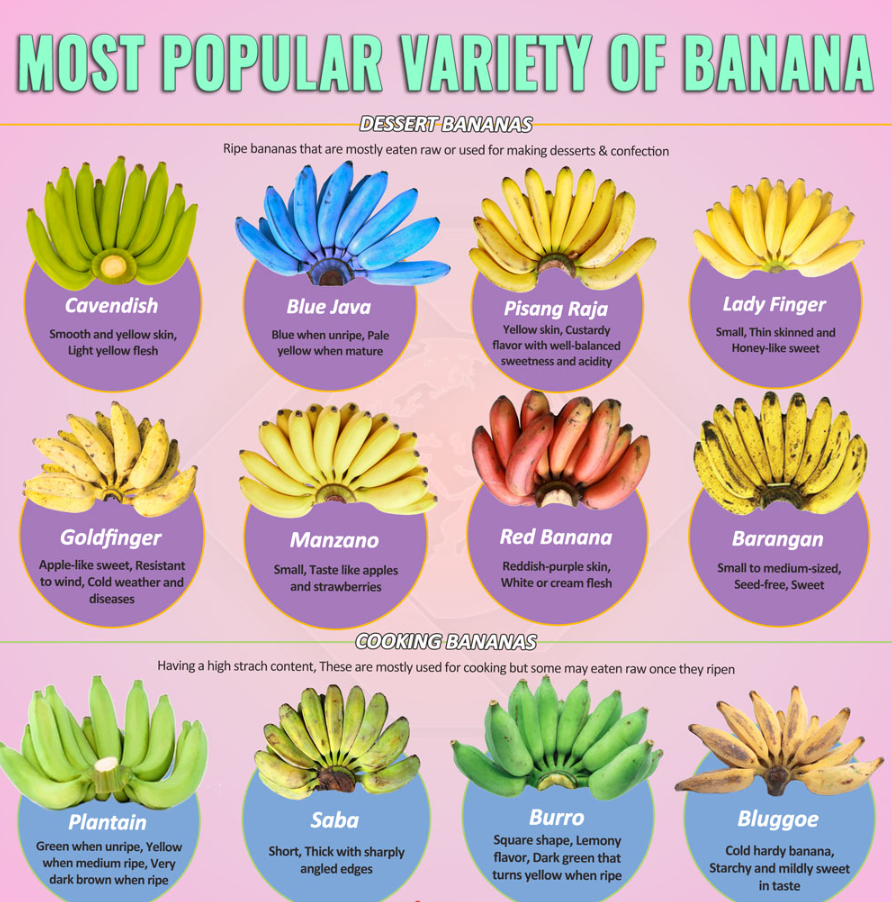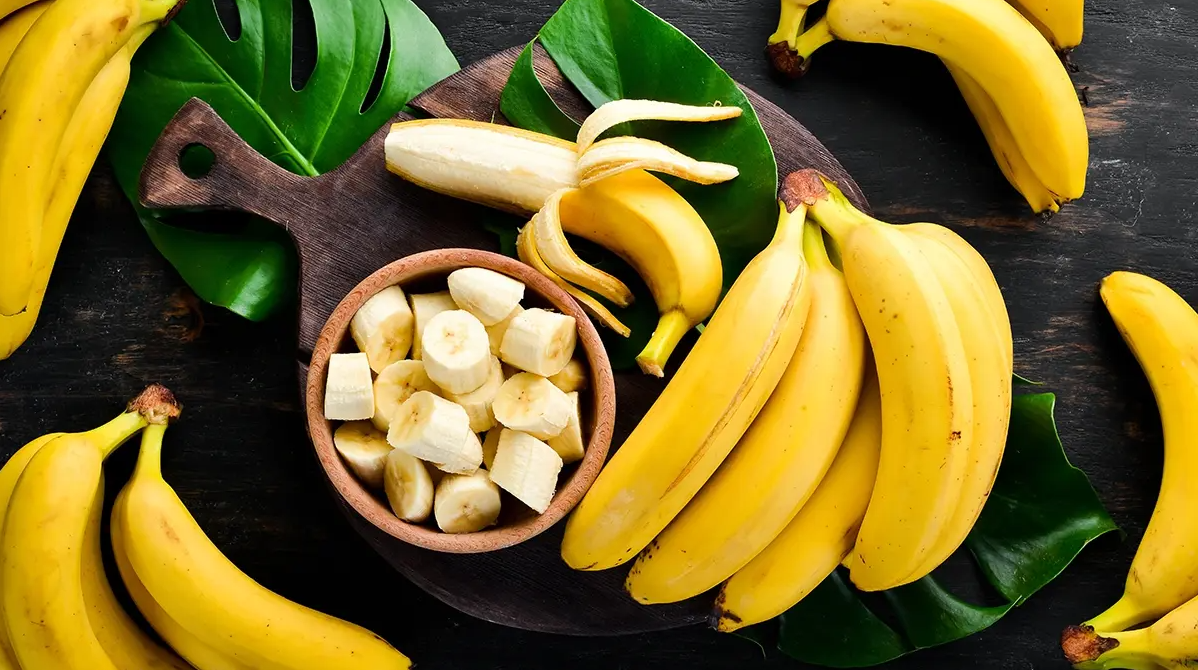
Bananas, with their naturally sweet taste and convenient packaging, are one of the most beloved fruits worldwide. But few people realize that the banana in its current form is largely a result of human intervention.
Thousands of years ago, ancient farmers began selectively cultivating wild bananas, transforming them from a seeded, sometimes bitter fruit into the soft, seedless variety we enjoy today.
Let's learn about the fascinating evolution of bananas and the impact of selective breeding, trade, and modern agricultural practices on their journey.
Along the way, we’ll explore bananas' origins, the scientific advances behind their cultivation, the environmental challenges they face, and how the beloved yellow fruit became a staple in diets around the globe.
What Does “Man-Made” Mean For Fruits?
When we refer to bananas as “man-made,” it doesn’t mean they were created in a lab. Instead, bananas are the product of selective breeding, an agricultural practice in which early farmers chose plants with desirable traits-such as sweetness, reduced seeds, and a softer texture-and cultivated them over generations.
Selective breeding is distinct from genetic modification (GMO), which involves directly altering an organism’s DNA in a lab.
Quick Comparison: Traditional Breeding vs. Genetic Modification
- Traditional Breeding: Over generations, farmers select plants with desired traits and cross-breed them to enhance specific characteristics (e.g., sweeter bananas with smaller seeds).
- Genetic Modification: Scientists alter a plant’s genetic code directly, often by inserting genes from different organisms to achieve traits that can’t develop naturally.
Bananas join a family of “man-made” produce that includes oranges (developed by crossbreeding pomelos and mandarins) and seedless grapes. With selective breeding, early farmers transformed bananas into a fruit that’s easy to eat, transport, and enjoy.
The Origins Of Bananas: From Wild Species To Edible Fruit
The banana’s journey began over 7,000 years ago in the regions of New Guinea and Southeast Asia, where two wild banana species, Musa acuminataand Musa balbisiana, grew naturally. These wild ancestors were quite different from today’s bananas-they contained numerous hard seeds and had a tough, fibrous texture.
However, they were also highly nutritious and provided a source of food and fiber, which led early civilizations to begin cultivating them.
As humans migrated and traded across Southeast Asia and the Pacific Islands, they brought banana plants with them, resulting in a blend of different banana species.
Over generations, the wild bananas naturally hybridized, producing plants with softer fruit and fewer seeds. This domestication and natural hybridization process laid the foundation for modern bananas.
By approximately 4,000 years ago, the domesticated banana had spread from New Guinea across Southeast Asia, where it continued to be selectively bred for more palatable qualities.
Related: Discover The Facts Are Grapes Man-Made Or Naturally Occurring?
Selective Breeding And Human Influence On Banana Evolution
The transformation of the banana from a wild, seeded fruit to a soft, seedless berry was no accident; it was the result of thousands of years of selective breeding.
Early farmers in Southeast Asia and New Guinea selectively propagated banana plants that exhibited favorable mutations, such as smaller seeds and sweeter fruit. This selective cultivation ultimately led to bananas that were not only more enjoyable to eat but also easier to grow and transport.
An important point in banana evolution was a random mutation that caused the fruit to develop without seeds-a characteristic that persists in most bananas consumed today.
Without seeds, bananas could not reproduce naturally, so humans began propagating them asexually by transplanting “suckers” or offshoots from the parent plant. This process has continued for centuries and is still the primary method of banana cultivation today.
By selectively breeding these seedless varieties, humans transformed bananas into a fruit that was sweeter, more digestible, and capable of growing in a range of environments.
Today’s bananas are nearly unrecognizable compared to their wild ancestors, showcasing the profound impact of human cultivation on this fruit.
Global Spread Of Bananas: Trade And Cultural Impact
The banana’s journey from its origins in Southeast Asia to becoming a global dietary staple was driven by centuries of trade and exploration.
Arab traders played a key role in spreading bananas from Southeast Asia to East Africa, where they quickly became a significant food crop.
European explorers, encountering bananas during their travels, introduced the fruit to the Americas in the early 16th century, and it soon gained popularity in the tropical climates of Central and South America.
The banana’s adaptability to diverse climates and its naturally long shelf life made it a valuable commodity.
As plantations grew across the Americas, particularly in the Caribbean and Central America, bananas became increasingly accessible, and demand soared.
By the 19th century, bananas had become a common sight in North American and European markets, further cementing their place as a global food staple.
Today, bananas are not only enjoyed as a dietary staple but also play an integral role in many cultural traditions and cuisines worldwide.
From fried plantains in Latin American dishes to sweet banana desserts in Southeast Asia, this fruit’s versatility has allowed it to become a beloved ingredient across cultures.
You Might Like: How To Balance Spices In Cooking - Tips For Flavor Perfection
Culinary And Cultural Uses Of Bananas
Bananas are more than just a snack; they’re a versatile fruit with unique uses that span across many cultures. While the most common use for bananas is as a dessert or snack, there are numerous ways this fruit is enjoyed worldwide.
In Latin America, for instance, plantains-a starchy variety of banana-are often fried or boiled as a staple food, adding a rich flavor to dishes. In Southeast Asia, bananas are used in savory recipes as well, such as in curries or as fried banana fritters.
Beyond food, bananas have found uses in making banana paper and textiles. The fiber extracted from banana plants, particularly from varieties like Musa textilis, is strong and durable, making it an ideal material for crafting ropes, fabrics, and eco-friendly paper.
These applications highlight the banana’s role not only as a source of nourishment but as an essential resource in various traditional industries.
The Modern Banana: Popular Varieties And Cultivation Techniques
Today, the world of bananas is more diverse than many realize, with hundreds of varieties cultivated for different uses. The Cavendish banana, a sweet and seedless variety, dominates global markets and is the most commonly consumed type in the Western world.
Known for its durability during shipping and its long shelf life, the Cavendish has become synonymous with bananas, though it is just one of many varieties.
Other popular types include the Red Banana, which has a slightly sweeter flavor and a hint of raspberry, and the Apple Banana, a small variety known for its tangy sweetness.
In tropical regions, cooking bananas or plantains are highly valued for their starchiness and ability to complement savory dishes.
Here’s a simple comparison table highlighting some of the main banana types:
| Banana Variety | Description |
| Cavendish | Taste Profile: Sweet, mild; Size & Color: Medium, yellow when ripe; Primary Use: Fresh consumption |
| Gros Michel | Taste Profile: Creamy, rich; Size & Color: Larger, thicker skin; Primary Use: Rare, fresh consumption |
| Red Banana | Taste Profile: Sweet with berry hints; Size & Color: Medium, reddish-purple skin; Primary Use: Fresh, dessert use |
| Apple Banana | Taste Profile: Sweet, tangy; Size & Color: Small, yellow; Primary Use: Fresh, desserts |
| Plantain | Taste Profile: Starchy, less sweet; Size & Color: Large, green or yellow; Primary Use: Cooking (fried, boiled) |
The Threat Of Monoculture And Disease Vulnerability
Despite their popularity, bananas face a serious threat from monoculture practices. The Cavendish banana, for example, is highly vulnerable to disease due to the lack of genetic diversity in its cultivation.
With all Cavendish bananas essentially clones of one another, they’re unable to naturally resist diseases, creating conditions for widespread agricultural losses.
A new strain of Panama disease, Tropical Race 4 (TR4), is currently threatening Cavendish plantations worldwide. Other diseases like black Sigatoka, a fungal infection, also pose a risk to banana crops.
In monoculture settings, where plants lack genetic diversity, diseases spread quickly, making it challenging to control outbreaks.
Environmental And Ethical Issues In Banana Production
The banana industry faces significant environmental and ethical concerns. Large-scale banana plantations often rely on monoculture, which depletes soil nutrients, leads to deforestation, and increases the need for chemical fertilizers and pesticides. These practices contribute to water pollution and disrupt local ecosystems.
Sustainability Tips For Eco-Conscious Banana Consumers:
- Buy Fair Trade Bananas: Supporting fair trade-certified bananas ensures fair wages and ethical working conditions for workers.
- Choose Diverse Varieties: Opting for lesser-known varieties like Red or Apple bananas helps reduce dependency on monoculture crops.
- Reduce Waste: Use overripe bananas in smoothies, baking, or freezing them to minimize food waste.
Genetic Studies And The Future Of Bananas
In the face of environmental and disease challenges, researchers are exploring banana genetics to ensure a sustainable future for the crop.
Recent discoveries in banana genetics, including research on chloroplast DNAand mitochondrial DNA inheritance, have provided valuable insights into species' evolutionary history.
Wild relatives like Musa acuminataand Musa balbisianahold the genetic keys to disease resistance and adaptability.
By crossbreeding cultivated bananas with wild varieties, breeders hope to introduce disease resilience.
Advances in gene editing and mutation breeding also hold promise for developing bananas with greater resistance to disease and environmental changes.
FAQs About Bananas
Are Bananas Natural Or Man-made?
Bananas are a product of both natural evolution and human intervention. While they originated from wild banana species, early farmers selectively bred bananas over thousands of years to create the sweet, seedless varieties we enjoy today.
Why Don’t Bananas Have Seeds?
The bananas we eat are parthenocarpic, meaning they develop fruit without fertilization and thus contain no seeds. This trait was likely a result of a random mutation that early farmers selected for due to its ease of consumption.
What Are The Main Types Of Bananas?
There are many types of bananas, but the most common are the Cavendish, Red Banana, Apple Banana, and plantains. Each type has a distinct flavor profile and is used for different culinary purposes.
Why Are Bananas Vulnerable To Disease?
Because commercial bananas like the Cavendish are genetically identical clones, they lack the genetic diversity needed to resist diseases. This makes them highly susceptible to diseases like Panama disease and black Sigatoka.
Are Bananas Genetically Modified?
Most bananas are not genetically modified. However, researchers are exploring genetic modification to develop disease-resistant varieties due to the vulnerability of bananas to certain fungal diseases.
Final Thoughts
The journey of bananas from wild, seeded plants to one of the most popular fruits worldwide is a testament to the power of human ingenuity in agriculture.
Through centuries of selective breeding and global trade, bananas have evolved into a beloved, versatile fruit. Yet, their reliance on human intervention and vulnerability to disease highlights the need for sustainable practices and genetic diversity.
As we enjoy bananas in our daily lives, understanding their origins and the challenges they face fosters a deeper appreciation for this incredible fruit and encourages us to make choices that support ethical and sustainable banana production.
Also Read: 10 Ways To Make Pumpkin Penne Extra Creamy And Delicious
